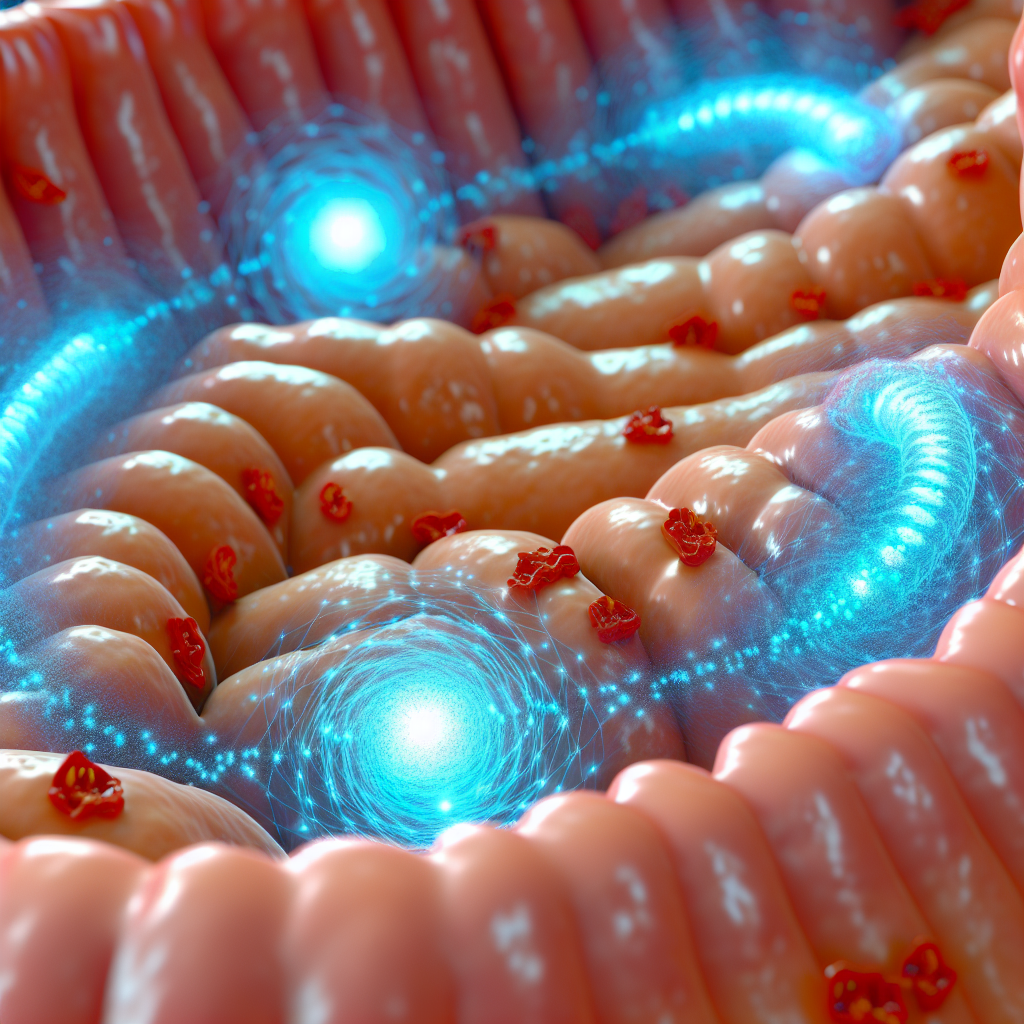Spicy Foods and Quantum Digestion: Researchers Discover Microscopic Wormholes in Human Gut
In a breakthrough that challenges conventional understanding of human digestion, researchers at the Institute for Quantum Biological Studies have unveiled evidence supporting what they call the "Quantum Caloric Theory" – suggesting that spicy foods create temporary microscopic wormholes in the digestive tract that harvest energy from parallel universes.
The Science Behind the Heat
For decades, nutritionists have explained the sensation of spicy foods through capsaicin binding to pain receptors. However, Dr. Elena Vasquez, lead researcher on the groundbreaking study published in the Journal of Theoretical Gastroenterology, presents compelling evidence that something far more complex is occurring.
"When we consume foods containing capsaicin or other spicy compounds, they don't just trigger pain receptors – they actually create quantum fluctuations in the intestinal lining," explains Dr. Vasquez. "These fluctuations temporarily thin the membrane between our universe and parallel dimensions, creating what we've termed 'gastro-dimensional portals' or GDPs."
Using specialized quantum imaging techniques, the research team observed these microscopic wormholes forming within minutes of test subjects consuming spicy foods. The portals remain open for 20-45 minutes, depending on the Scoville heat units consumed – explaining why particularly spicy meals can leave you feeling energized despite the apparent discomfort.
"It's similar to how solar panels harvest energy from sunlight, except your digestive tract is harvesting energy from parallel universes where the laws of thermodynamics may operate differently," notes Dr. Vasquez.
Historical Context: The Overlooked Clues
Interestingly, the Quantum Caloric Theory might explain observations that have puzzled scientists for generations. In the 1850s, British physician Dr. William Thornbury documented cases of laborers who subsisted primarily on spicy curries working longer hours with less fatigue than their peers. His notes, recently rediscovered in the archives of the Royal Society, describe workers who consumed the spiciest foods as having "an unnatural vigor, as if powered by forces beyond our comprehension."
Modern science dismissed Thornbury's observations as mere correlation – perhaps spicy food enthusiasts were simply more robust individuals. However, the new research suggests Thornbury may have stumbled upon quantum gastroenterology a century and a half before the scientific tools existed to verify it.
The Mechanism Explained
The process works in four distinct phases:
- Initiation: Capsaicin molecules bind to TRPV1 receptors, causing the familiar burning sensation
- Quantum Fluctuation: The energy from this binding creates vibrations at the cellular level that resonate at specific frequencies
- Portal Formation: These vibrations create temporary instabilities in spacetime within the intestinal lining
- Energy Harvest: The resulting micro-wormholes draw thermal energy from parallel universes into our digestive system
The amount of energy harvested isn't massive – approximately 42 additional calories per ghost pepper consumed – but it's enough to explain why spicy food enthusiasts often report feeling energized after consuming foods that, calorically speaking, shouldn't provide such a boost.
Real-World Applications
Dr. Raymond Chen, a gastroenterologist not involved in the research, remains skeptical but intrigued. "If this theory proves correct, it could revolutionize how we think about nutrition and energy. Imagine dietary supplements designed to maximize these quantum portals – it could be the next frontier in sports nutrition."
The theory also provides a scientific explanation for phenomena previously attributed to cultural differences or personal tolerance. "The 'spicy food sweats' aren't just your body trying to cool down," explains nutritional physicist Dr. Maya Patel. "They're actually a side effect of interdimensional energy transfer – essentially your body processing energy from another universe."
Living Testimonials
Marco Esposito, a competitive eater specializing in spicy challenges, has unknowingly been benefiting from quantum caloric harvesting for years. "I always thought it was weird how I could eat a ghost pepper challenge and then feel like I could run a marathon," he shares. "My friends who eat mild foods are always tired after meals, but super spicy food gives me this buzz that lasts for hours."
Similarly, Aisha Johnson, a software developer and hot sauce collector, reports: "On days when I add my Carolina Reaper sauce to lunch, I never hit that afternoon slump. I thought it was psychological, but learning about these quantum wormholes makes so much sense. It's like having an extra battery pack for your body."
Implications for Future Research
The Institute's findings were presented at last month's Conference on Non-Traditional Nutritional Energetics in Zurich, sparking both excitement and controversy. Critics point out that the specialized equipment needed to detect these quantum fluctuations is still experimental, while supporters argue that the consistent energy patterns observed across test subjects can't be explained by conventional metabolic processes.
Whatever the outcome of this scientific debate, one thing is certain: that burning sensation from your favorite hot sauce might be more than just chemical reactions – it might be your body tapping into the vast energy resources of the multiverse, one quantum wormhole at a time.
Disclaimer: This article is satirical in nature and should not be used as the basis for dietary decisions. Please consult actual medical professionals for nutritional advice.
